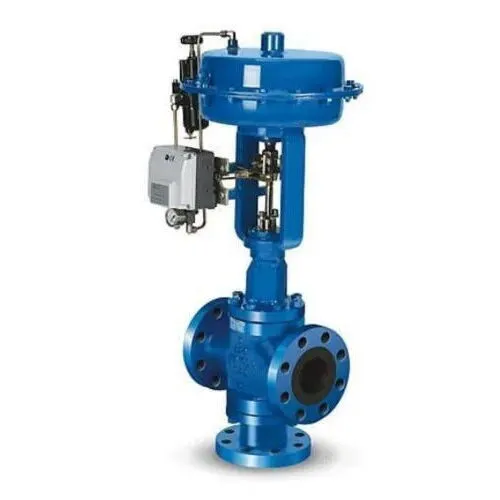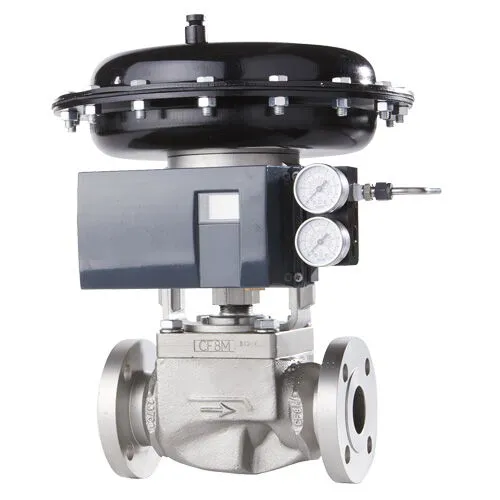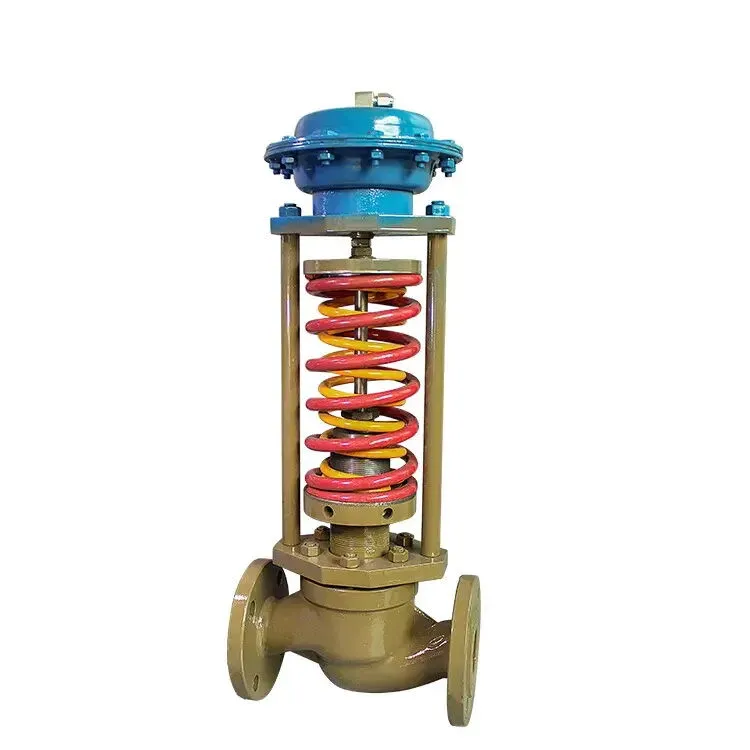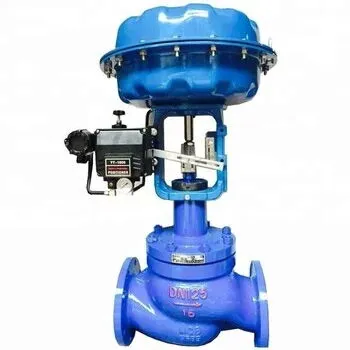Product Name: Pneumatic 3 Way Control Valve
Size Range: 3/4 Inch, DN20
Pressure Range: Class 150 LB, PN16
Material: Stainless Steel, ASTM A351 CF8
Actuator: Pneumatic
End Connection: Flange, Welded, or Threaded End
The pneumatic three-way valve is a type of fluid regulation device that operates under the influence of a pneumatic actuator, enabling the redirection of fluid flow along three distinct pathways. Predominantly utilized in systems necessitating the alteration of flow directions or the blending of various substances, this valve's operation hinges on the manipulation of the pneumatic actuator's position. This adjustment to the actuator's position dictates the valve's aperture, thereby facilitating exact control over both the volume and trajectory of the fluid.
Widely implemented across the spectrum of industrial automation, pneumatic three-way control valves are particularly favored in environments that demand adaptable control mechanisms. Such applications are frequently encountered in the manufacturing sector, within chemical processing facilities, and in the context of HVAC systems. Characterized by their dependable performance and swift response times, these valves constitute an effective control strategy for intricate fluid management systems.
Valve Characteristics:
In the case of metal-seated valves, achieving a tight seal necessitates the presence of flat and well-finished sealing surfaces. The valve disc should move smoothly on its stem, with minimal friction caused by the guide. To attain a good seal, a surface finish of 0.5 μm and a flatness within two optical light bands are typically required. The durability of the sealing and mating surfaces against wear significantly contributes to the extended service life of the valve. Unlike standard isolation valves, the closing force in a 3-way pneumatic control valve is relatively low due to a small pressure differential. While resilient seals might improve the shut-off capability, they are also more susceptible to damage than metal seats.
Valve Installation:
The installation process can be a vulnerable time for the valve seat, as it is susceptible to damage from dirt and other contaminants present in the system. Lifting the valve for the first time can cause these impurities to scratch or damage the seat. To mitigate this risk, it is advisable to flush the system thoroughly before installation and to ensure that the valve is mounted in an area free of debris. This proactive approach helps to avoid the passage of foreign matter that could compromise the valve's sealing integrity.




